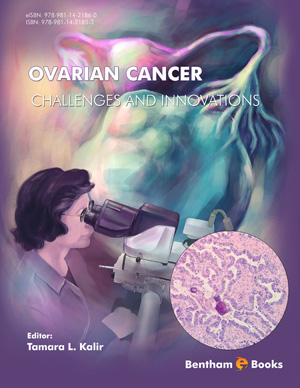Abstract
High-grade serous carcinoma (HGSC) is the most common epithelial ovarian cancer (EOC) accounting for 60% to 80% of ovarian cancers. Its main molecular alterations are 1) mutation or non-function of TP53, 2) BRCA1 or BRCA2 germline mutations and 3) alterations in the EGFR/HER2 pathway with Her2 overexpression. Despite these well-known genetic alterations, our understanding of gene interactions in canonical pathways remains fairly rudimentary. One approach to better understand gene-biopathway interplay is using in-silico analyses of gene expression microarray databases available in the public data repositories. Minimum information about a microarray experiment (MIAME) guidelines established, as a prerequisite for the publication of microarray data, that data supporting published conclusions are made available for further analyses by other researchers. However, in spite of the availability of large, responsibly generated datasets to the public, secondary analyses are rarely performed. The purpose of this chapter is to show an example of this approach by undertaking an in-silico analysis of Public Gene Expression Omnibus (GEO) datasets comparing the gene expression between HGSC and Fallopian Tube Epithelium (FTE) and between HGSC and Ovarian Surface Epithelium (OSE), to then apply a Functional Genomics approach to study the gene interaction of HGSC in canonical pathways, in-silico activation of these pathways, and how chemotherapeutic drugs potentially affect them. We will explain step by step the methodology and results, including the datasets selection, data filtering and normalization, comparison of the gene expression between the samples using a class comparison analysis, validation by immunohistochemistry (IHC) and Functional Genomics Analysis using Ingenuity Pathway Analysis (IPA).
Keywords: Canonical pathways, Epithelial ovarian cancer, Functional genomics, Gene interaction, In-silico analysis, Ingenuity Pathway Analysis, Mutations.






















